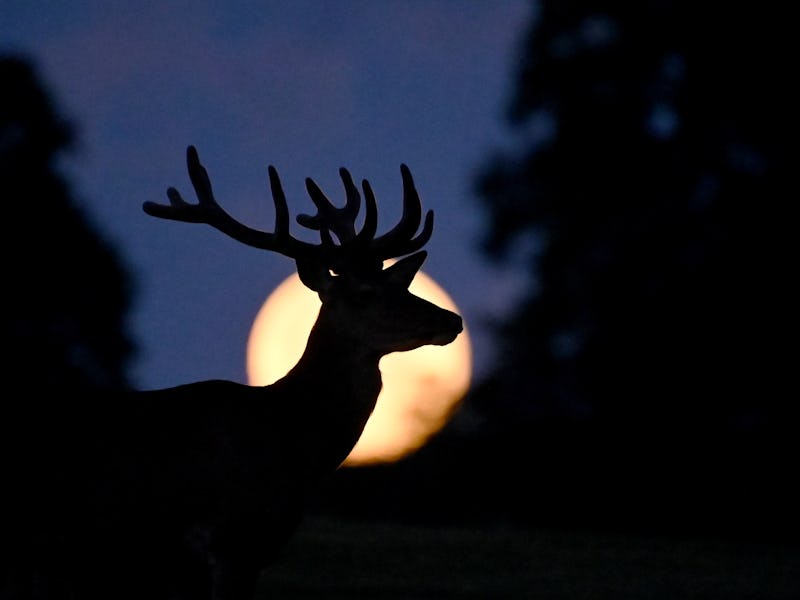The Full ‘Buck’ Moon This Weekend Will Be Epic — Don’t Miss It
Time to go buck wild for the Buck Moon.

Get ready for a full Moon weekend just in time to celebrate the 55th anniversary of the Apollo 11 Moon landing.
The Moon will be at its fullest just after sunrise on Sunday morning, July 21, but it will look full in the sky for about three days, starting on Friday evening. July’s full Moon is best known as the Buck Moon, thanks to the Indigenous Algonquin people of the northeastern U.S., who first recognized that July’s full Moon happens around the same time that male deer start growing their new antlers. This year’s Buck Moon also coincides with the 55th anniversary of the first Moon landing on July 20, 1969 (so we could also call it the Neil and Buzz Moon).
This year’s Buck Moon is just in time for the Apollo 11 anniversary.
A full Moon happens when the Moon and the Sun are on exact opposite sides of Earth, so the side of the Moon that faces Earth is fully lit up by the Sun. Technically, that will happen at exactly 6:17 am Eastern Time on the morning of July 21, but it will be close enough to look full starting on Friday evening and lasting through Monday morning.
That’s perfect timing, since Saturday marks the 55th anniversary of Apollo 11’s historic landing on the Moon. This handy map gives you a good idea of where all six Apollo landing sites are on the lunar surface; you won’t be able to see much detail, but you can probably spot the nearby craters and other features if you have a telescope or a good set of binoculars. While you’re looking, take a moment to notice the Moon’s south pole, where the Artemis III mission will land in a few years.
Here on Earth, July’s full Moon marks the month when deer in the northern U.S. start growing their new antlers (further south, most deer species started a month or two earlier). Male deer, or bucks, shed their antlers in the late winter or early spring, then start growing new ones in late spring or early summer. The antlers emerge from a pair of organs called pedicles, located at the front of the buck’s skull. New antlers emerge covered in a velvety substance that helps protect the growing bone.
Next month’s full Moon, the Sturgeon Moon, will happen on August 19. The 2024 Sturgeon Moon will also be a blue Moon, because it’s the third full Moon out of four this season. Between the Buck Moon and the Sturgeon Moon, look out for the Perseid Meteor Shower, which will peak on August 12.